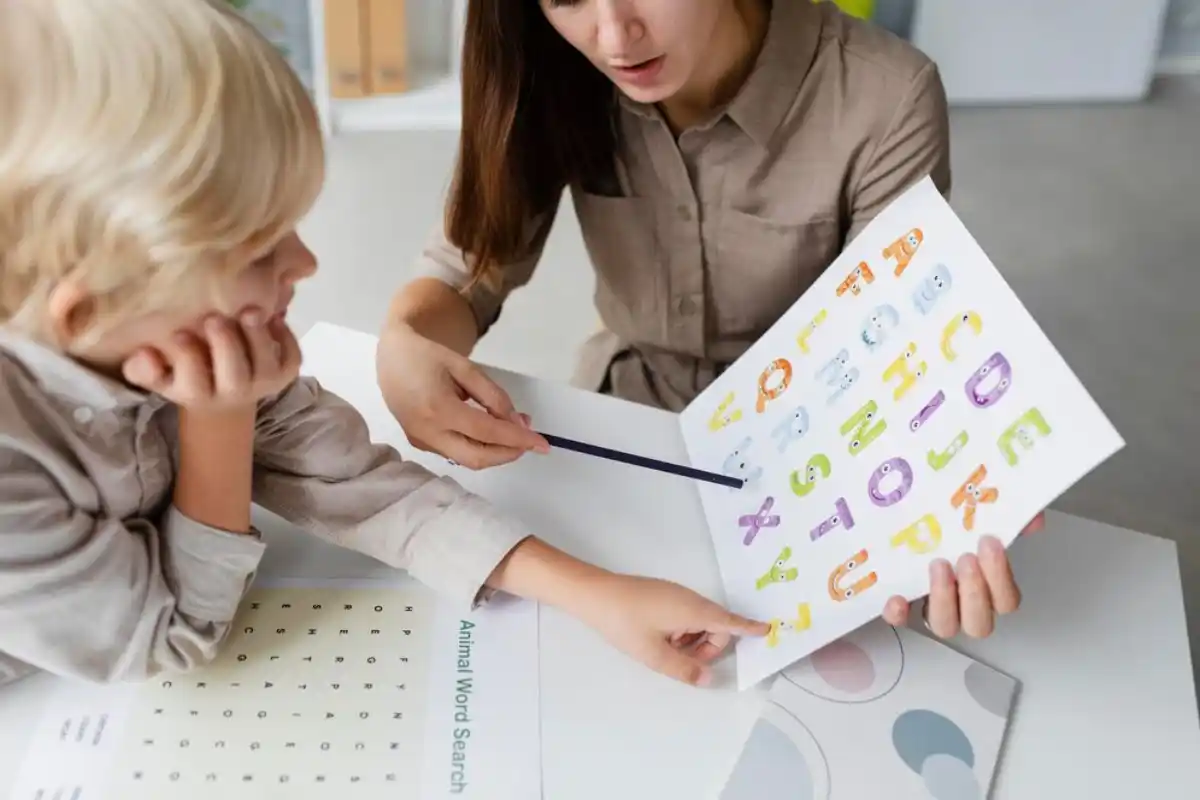The Education Blog

Supporting Children with Learning Differences at School
Every child is a world unto themselves, learning in distinct ways. Some thrive in traditional classrooms, perfectly in tune with their style. Yet, for those with learning differences, uniqueness requires a tailored touch. These children may face challenges with reading, writing, attention, memory, or social interactions. With the right support in schools, they can thrive academically and emotionally.
Acknowledging learning differences doesn’t mean dumbing down the bar. It’s about crafting a level playing field for all. When schools, teachers, and families unite, every child can bloom to their fullest potential.
In this article, we’ll unveil the art of spotting learning differences. We’ll share clever strategies to embrace every student in the classroom. Additionally, we’ll explore how families and educators can unite. Together, they’ll enhance education for every child, weaving a tapestry of support and success.
Understanding Learning Differences
Learning differences describe the unique ways that people learn and communicate. These forms have to do with how the brain is wired. They can impact a child’s academic performance, social interactions and behaviour. Knowing these differences is key to supportive attention and success. At the same time, embracing diversity in learning is essential to unlocking each child’s potential.
Common Types of Learning Differences:
- Dyslexia: A labyrinth of letters, where reading and language processing intertwine.
- Dyscalculia: A mathematical maze that confounds understanding and number concepts.
- Dysgraphia: A struggle with the pen, where handwriting and expression collide.
- ADHD (Attention-Deficit/Hyperactivity Disorder): A whirlwind of thoughts, affecting focus and control.
- Autism Spectrum Condition (ASC): A unique lens on social cues, sensory worlds, and behaviour.
- Auditory or Visual Processing Disorders: A fog that clouds the brain’s interpretation of sounds and sights.
Learning differences don’t define a child’s brilliance or boundless potential. Many children with such diagnoses are capable, creative, and astoundingly resourceful. They flourish when equipped with the right tools and nurtured in a supportive environment.

Early Signs: Identifying a Learning Difference
Teachers and parents are usually the first to notice when a child struggles. Even with all the help in the world, early identification remains crucial. Recognising challenges early unlocks the door to effective support systems. With prompt action, we can pave a smoother path for every child.
Potential Indicators:
- Persistent difficulties with reading, writing, or mathematics
- Trouble following instructions or completing tasks on time
- Poor memory retention despite repetition
- Easily distracted or overly active
- Difficulty with organisation or sequencing
- Avoidance of schoolwork or frequent complaints of feeling “stupid”
- Social difficulties or heightened sensitivity
If worries arise, a team of educational psychologists, speech and language experts, or occupational therapists can help clear up doubts and provide guidance.
The Importance of Inclusive School Support
Inclusive learning environments are gardens where every student can bloom. It’s not just about those with extra needs; respect for diversity ignites a spark. When we nurture varied learning styles, empathy, creativity, and resilience blossom abundantly. Each mind contributes a unique hue to our vibrant tapestry of education. Together, we cultivate a community that thrives on understanding and support.
What Effective School Support Looks Like:
- Differentiated Instruction
- Adapting lesson content, pace, and delivery to meet varying student needs
- Providing visual aids, verbal instructions, or hands-on materials based on learning styles
- Individualised Education Plans (IEPs)
- Documents that list a child’s learning goals and the ways or resources to help meet them.
- Developed collaboratively by educators, support staff, and families
- Specialist Support Services
- Access to SENCOs (Special Educational Needs Coordinators), learning support assistants, and therapists
- In-class support or targeted one-to-one intervention
- Reasonable Adjustments
- Changes like extra time on tests, using assistive technology, or having quiet workspaces.
- Ensures equity without compromising academic standards
- Positive Behaviour Strategies
- Encouragement and reinforcement over punishment
- Clear expectations, consistent routines, and a safe emotional climate
The Role of Teachers and School Staff
Teachers are key in spotting learning needs. They offer daily support and help every child feel they belong.
Key Practices for Educators:
- Tune into each child’s unique strengths, interests, and emotional needs. Trust and connection lay the groundwork for learning success.
- Engage multiple senses simultaneously! Blend visual, auditory, and kinaesthetic methods. This approach enhances retention and deepens understanding.
- Help children discover their learning style. Encourage them to ask for support, utilise tools, or express what benefits them most.
- Share valuable insights with colleagues, support staff, and families. Consistent communication fosters a unified approach to learning.
- Recognise that support strategies must grow and adapt over time. Let observations and assessment data drive informed practices.

How Parents Can Support at Home
Family involvement is crucial in reinforcing school strategies and providing emotional reassurance.
Practical Ways to Support Learning at Home:
- Establish Consistent Routines
- Structure helps children feel secure and organised
- Set designated times for homework, breaks, and rest
- Celebrate Effort and Progress
- Recognise small achievements and focus on growth, not just grades
- Encourage resilience and a positive mindset
- Maintain Open Communication
- Stay in regular contact with teachers and support staff
- Attend meetings, ask questions, and be proactive in seeking clarification
- Utilise Assistive Tools
- Text-to-speech software, audiobooks, spelling and grammar apps, and visual schedules all support learning.
- Ask schools for access to recommended resources
- Seek External Support When Needed
- Engage educational psychologists, tutors, or support groups
- Explore charities or organisations that specialise in specific learning differences

Embracing Strengths and Individuality
Children with learning differences often possess hidden treasures. Their amazing talents shine in art, music, technology, problem-solving, or social skills. Unearthing and nurturing these strengths is just as vital as addressing challenges. Let’s help them flourish in every possible way!
Encourage:
- Creative projects or hobbies that foster self-expression
- Problem-solving tasks that play to their strengths
- Opportunities for leadership, teamwork, or mentoring roles
Focusing on what a child can do helps build their self-esteem, motivation, and identity.
Creating a Culture of Acceptance
Helping children with learning differences isn’t just up to teachers and parents. It needs a wider cultural change in schools.
Fostering Inclusion Among Peers:
- Integrate discussions about neurodiversity into classroom teaching
- Celebrate all learning styles and achievements
- Encourage kindness, empathy, and respect among classmates
School-Wide Initiatives:
- Host awareness workshops for staff and students
- Ensure policies reflect a commitment to equity and support
- Involve student voice—ask what helps them feel included and heard
A space that accepts differences helps all children thrive in school and life.
Every Child Deserves the Chance to Thrive
When we embrace and honour learning differences, we edge toward an education revolution. Through compassionate teaching and customised strategies, we open doors for every child. Schools and families work together to create a support system. This helps children break down barriers. Here, they discover their strengths, soaring towards true academic triumph.
Helping diverse learners goes beyond just meeting their needs. It’s about opening doors to their potential.
Act now: If you’re a teacher, parent, or school leader, take one step to support inclusive education. This might mean using assistive tools, starting a chat, or simply listening with care. Every child deserves a classroom where they feel seen, supported, and believed in.









